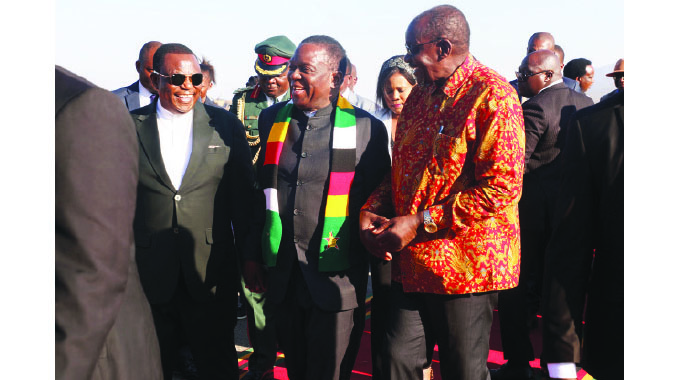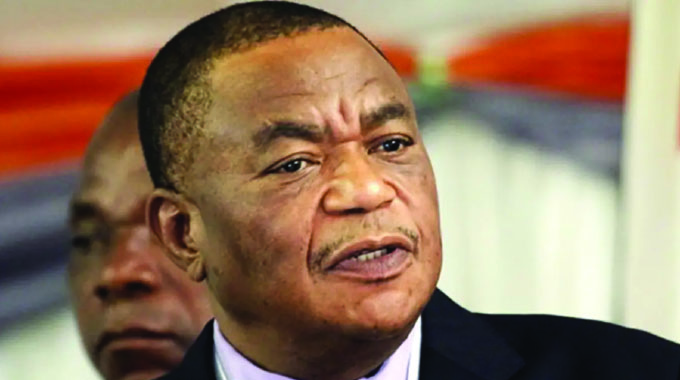6 869 projects steering Zim to Vision 2030 goal

Mukudzei Chingwere
Herald Reporter
The Second Republic implemented 6 869 development projects between 2018 and 2022, with 4 984, both Government and private sector-led, now complete and the rest being actively worked on as they move towards completion, Cabinet was told yesterday.
The developments are a key enabler towards the attainment of an empowered upper middle-income society envisioned by President Mnangagwa by 2030.
Coinciding with a period in which the global economy has been pushed back by Covid-19 headwinds resulting in a global economic shrink, Zimbabwe’s performance is not only the best accelerated development spell the country has ever experienced but also a shining example for the subdued global economy.
Right from his assumption of duty, President Mnangagwa emphasised that his Government would prioritise projects that improve people’s lives through the strategic deployment of Government resources.
He was committed to, and delivered, a business enabling environment resulting in the flow of capital back into the economy after years of regression.
A major highlight of implemented projects is their strategic national spread as informed by the President’s thrust of leaving no place and no one behind in the national development plan.
Minister of State for Presidential Affairs and Monitoring Implementation of Government Programmes, Dr Joram Gumbo presented the compendium of the development projects to Cabinet which shows that the highest number of completed projects, 37,4 percent or 1 866, are listed under infrastructure.
This accelerated infrastructure development plan is expected to push Zimbabwe’s infrastructure to levels consistent with an upper middle income economy.
“The purpose of the compendium of both Government and private sector-funded projects is to inform stakeholders and the public of the work that the Second Republic is undertaking in uplifting the livelihoods of citizens as we journey towards a prosperous and empowered upper middle-income society by 2030,” Information, Publicity and Broadcasting Services Minister Monica Mutsvangwa said after yesterday’s Cabinet meeting.
“The intention of the compendium is to inform the citizenry on the status of life-changing projects meant to address the needs and problems of the generality of the people, to promote the participation of citizens in national development issues, which is consistent with the devolution and decentralisation agenda, and to serve as a referral source document for tracking project implementation and performance.
“The highest number of projects were implemented in the following provinces: Midlands 1 083, Manicaland 951, Mashonaland East 861, and Matabeleland South 800,” said Minister Mutsvangwa.
Bulawayo Metropolitan Province had 230 projects, out of which 163 were completed and 67 are soon to be completed.
Among the completed projects are a new plant that was installed at Treger Group (Kango) and is now operational, a soft drink plant was installed at Arenel (Pvt) Ltd, digital TV transmission equipment was installed at ZBC’s Montrose studio, and Thorngroove Infectious Diseases Hospital rehabilitated.
In Bulawayo 10 Community Information Centres were established, five Early Childhood Development blocks were completed at the five primary schools of Nketa, Mahatshula, Mganwini, Manundwane and Senzangakhona, and five roads were tarred: 6th Avenue, 8th Avenue, Coghlan Ave, Doncaster Road and Woodville Park Road.
Harare Metropolitan had 267 with 121 completed and 146 soon to be completed.
Those completed include a youth interact centre in Mufakose, 22,4km of road were tarred, e-passport offices were established and operationalised, a gender response safe market was established in Epworth and 30 community information centres were established.
Matabeleland North had 669, with 435 projects completed and 234 soon to be completed.
The completed projects include the establishment of Hwange Teachers College and Binga Vocational Training Centre, installation of piped water schemes at Mkhombo, Jotsholo Sub Office, Dingani Clinic and Tiki Clinic in Lupane and Hwange, and construction of the Lupane Magistrates Court.
Also there was the issuance of national registration documents in Tsholotsho and Binga, and availing of employment opportunities in Government departments.
Matabeleland South had 800 projects, with 523 completed and 277 soon to be completed.
Those completed include launch of the Ntepe-Manama Community Radio Station, rolling out of the water, sanitation and hygiene schools project, the establishment of the Mopani Worm/Amacimbi/Madora Processing Plant at Beitbridge and the 5MW Richsaw Solar Plant at Gwanda.
Manicaland had 951 projects, with 777 completed and 174 soon to be completed. The completed projects include the construction of Marovanyati Dam, construction of washed away bridges and approaches on nine bridges affected by Cyclone Idai and 14 health centres were connected to the digital platform among others.
Mashonaland Central had 727, with 581 completed and 146 soon to be completed. Some of the projects that were completed and functional include 13 rural health centres.
Mashonaland East had a total of 861, out of which 604 were completed and 257 soon to be completed while Mashonaland West had 604 projects, with 452 projects completed and 152 soon to be completed. Among those completed is the establishment of e-passport offices in Chinhoyi.
Masvingo Province had 677 projects, with 537 completed and 140 soon to be completed. The completed projects include the rehabilitation of 85 kilometres of the Ngundu-Tanganda Road and drilling of 44 boreholes in Bikita, Masvingo, Chivi, Chiredzi and Mwenezi Districts.
Midlands had 1 083 projects, with 791 completed and 292 are soon to be completed.









Comments